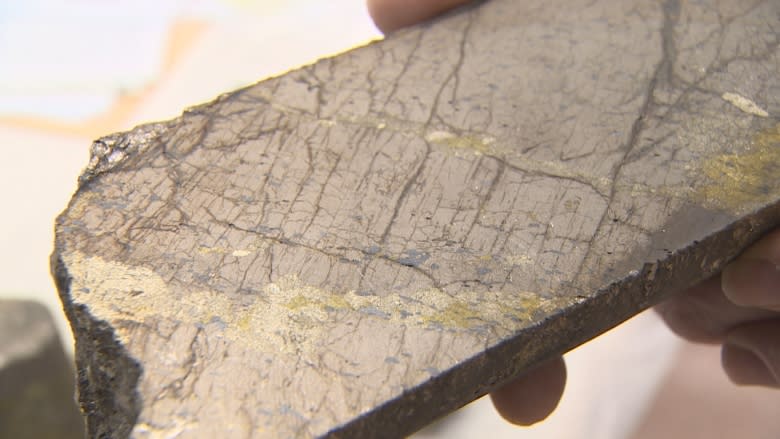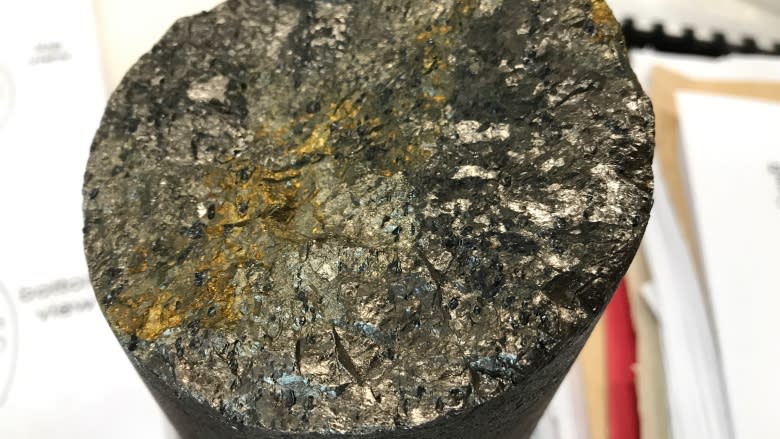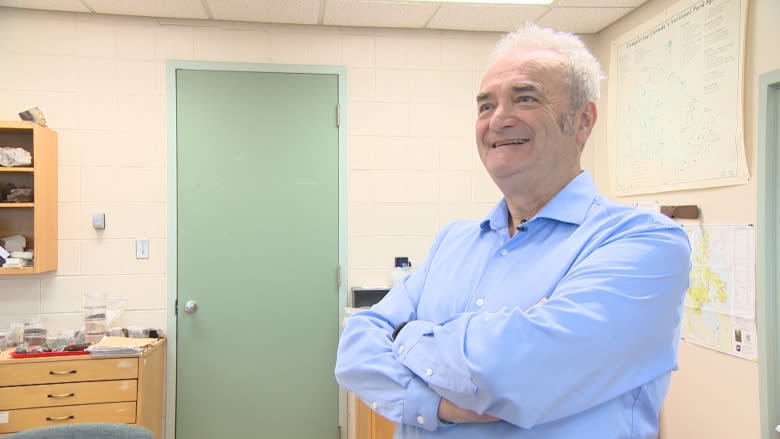Mineral deposits at Voisey's Bay 'exquisite,' says geology professor
Questions about the fate of mining operations at Voisey's Bay over the past year have been replaced by unbridled hope and enthusiasm.
A green light for a multibillion-dollar underground expansion, a lifespan extended by many years, a workforce that will nearly double, and an operation poised to capitalize on what many expect will be an explosion in the demand for electric vehicles in the coming years.
Every nickel explorer's dream
You only need to pick up a metallurgical core sample from Voisey's Bay to understand what all the hype is about, and you don't need to be a geologist to know you're holding something unique.
Many times heavier than a similar-sized rock, these samples were drilled to test the ore body, and the first people to cast their eyes on them were likely very impressed.
"They probably went out and bought a lot of shares," Wilton joked.
The sample is rich in pentlandite and chalcopyrite. In more simple terms, it's every nickel explorer's dream, and a jaw-dropper if you're looking for copper and cobalt.
"Most people don't find something as exquisite as this in their lifetime," Wilton added.
Voisey's Bay was discovered by prospectors Al Chislett and Chris Verbiski in 1993. They were exploring for a company called Diamond Field Resources.
Three years later, the discovery was sold to Inco, a Canadian mining company, for $4.3 billion.
The mine opened in 2005, and a year later Inco was swallowed up in a massive $18.2-billion takeover by Vale, a Brazilian company.
Since mining began, some $15 billion in minerals has been hauled out of the famous Ovoid in northern Labrador, at very low cost.
"Usually in the Canadian context with mining operations it takes 10 years, maybe a little bit more, to pay back the amount of money that you put in there to start the mining operation," said Wilton.
"So apparently they paid this back within two or three years, which is just phenomenal. [That will] give you an idea how rich the ore was."
Going underground
But the surface mine will be exhausted in about four years.
So Vale is going underground, where ore bodies about the same size as the Ovoid have been found. And there's significant upside on the exploration front, with the potential for more expansion in the future.
Vale has estimated the mine's lifespan will be extended by 15 years, but many believe that's a very conservative number.
"They've got 15 years worth of minable reserves right now but when they get underground they're probably going to find a lot more," said Wilton.
Voisey's Bay has been called one of the most substantial mineral discoveries in Canada in more than a generation, and the growth in sales of electric vehicles is only bolstering its value.
Some experts call Voisey's Bay a perfect battery metals mine, because of numbers like these.
"It has about three per cent nickel, about two per cent copper and a little bit less than one per cent of cobalt," said Wilton.
Big job numbers
And these are not the only impressive numbers.
The full-time workforce at Voisey's Bay is expected to grow from 450 to more than 900 when the expansion is complete.
The expansion will also ensure the long-term viability of Vale's new nickel processing facility in Long Harbour, Placentia Bay, which currently employs more than 900 Vale and contract workers.
That's about $370 million annually in labour income.
"If I was somebody that was working after I'd be quite happy," said Wilton.
Most of the workers at Voisey's Bay are represented by the United Steelworkers' union, and earn a base annual salary of about $65,000, plus performance bonuses that can boost their incomes by up to 35 per cent or more.
Local 9508 leader Boyd Bussey said his members are happy about the expansion.
"It's all good news," Bussey said. "We're going to double our membership."
And with exploration activity increasing in Labrador, Wilton is convinced that another major deposit is out there to be found.
"It is potentially a treasure trove," he said.




